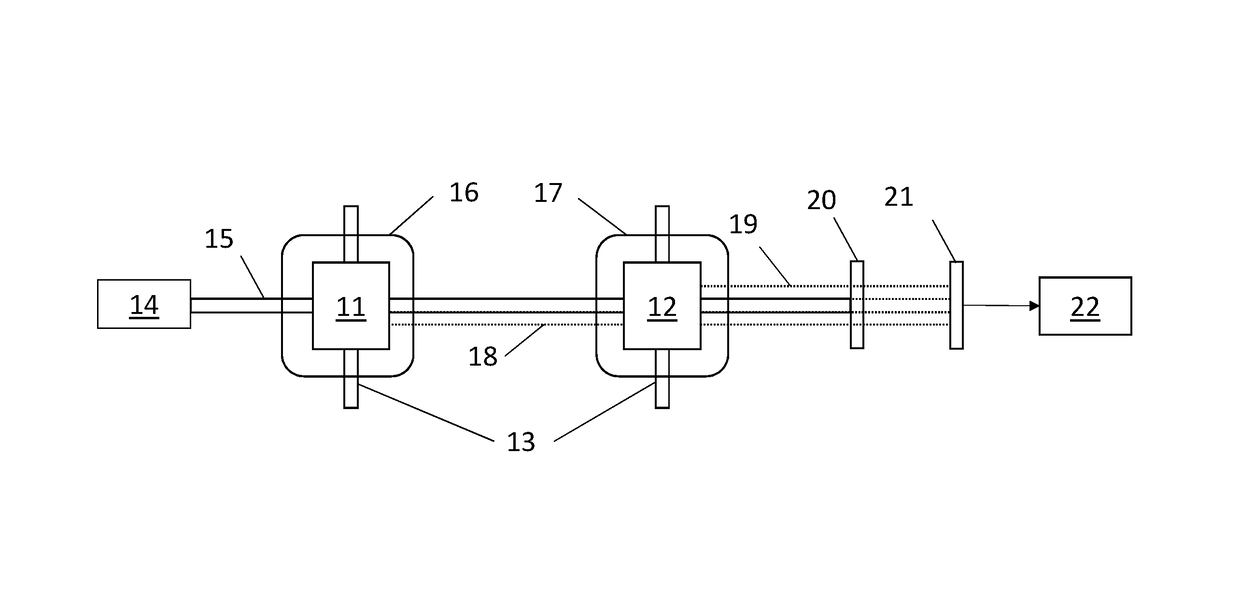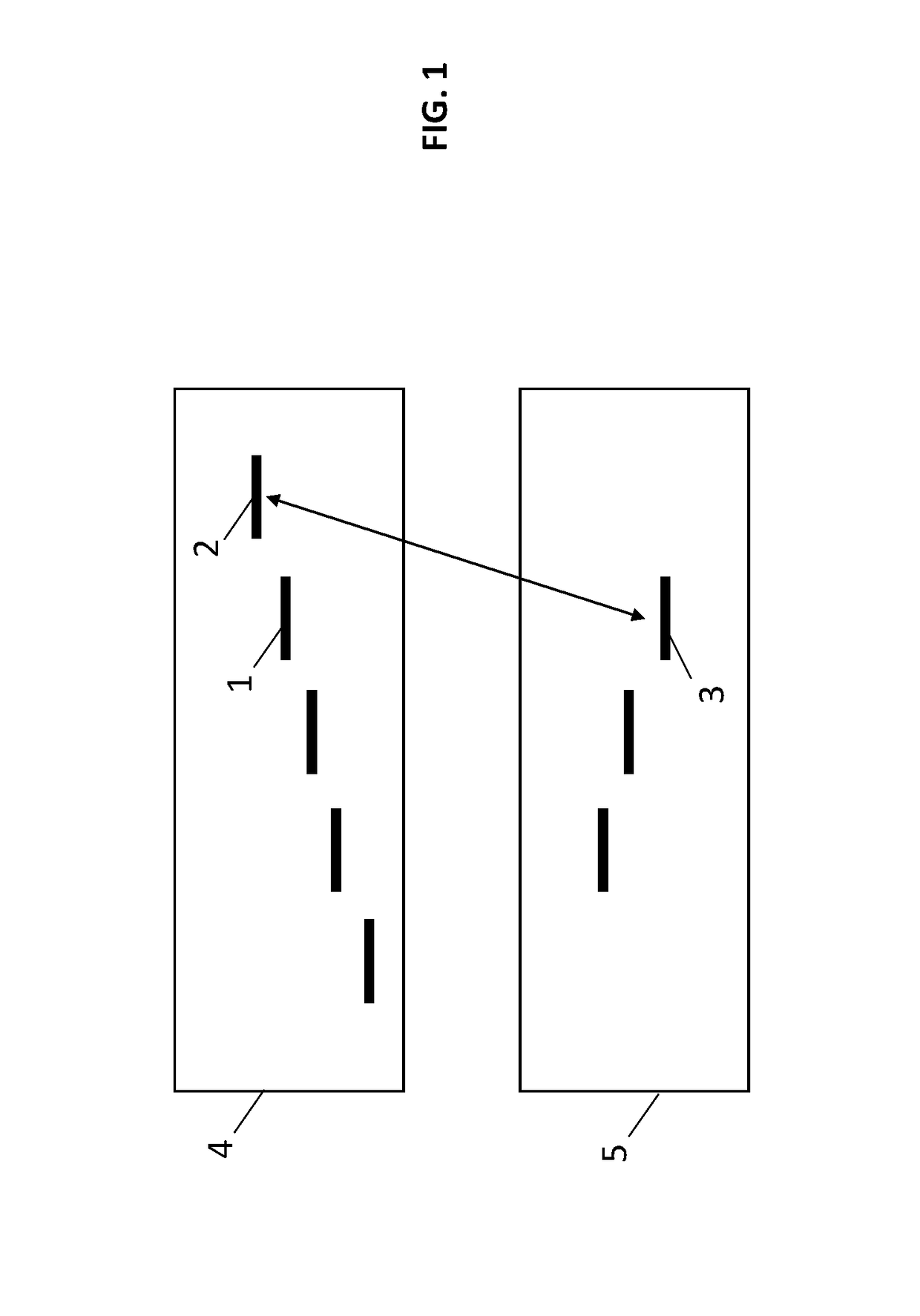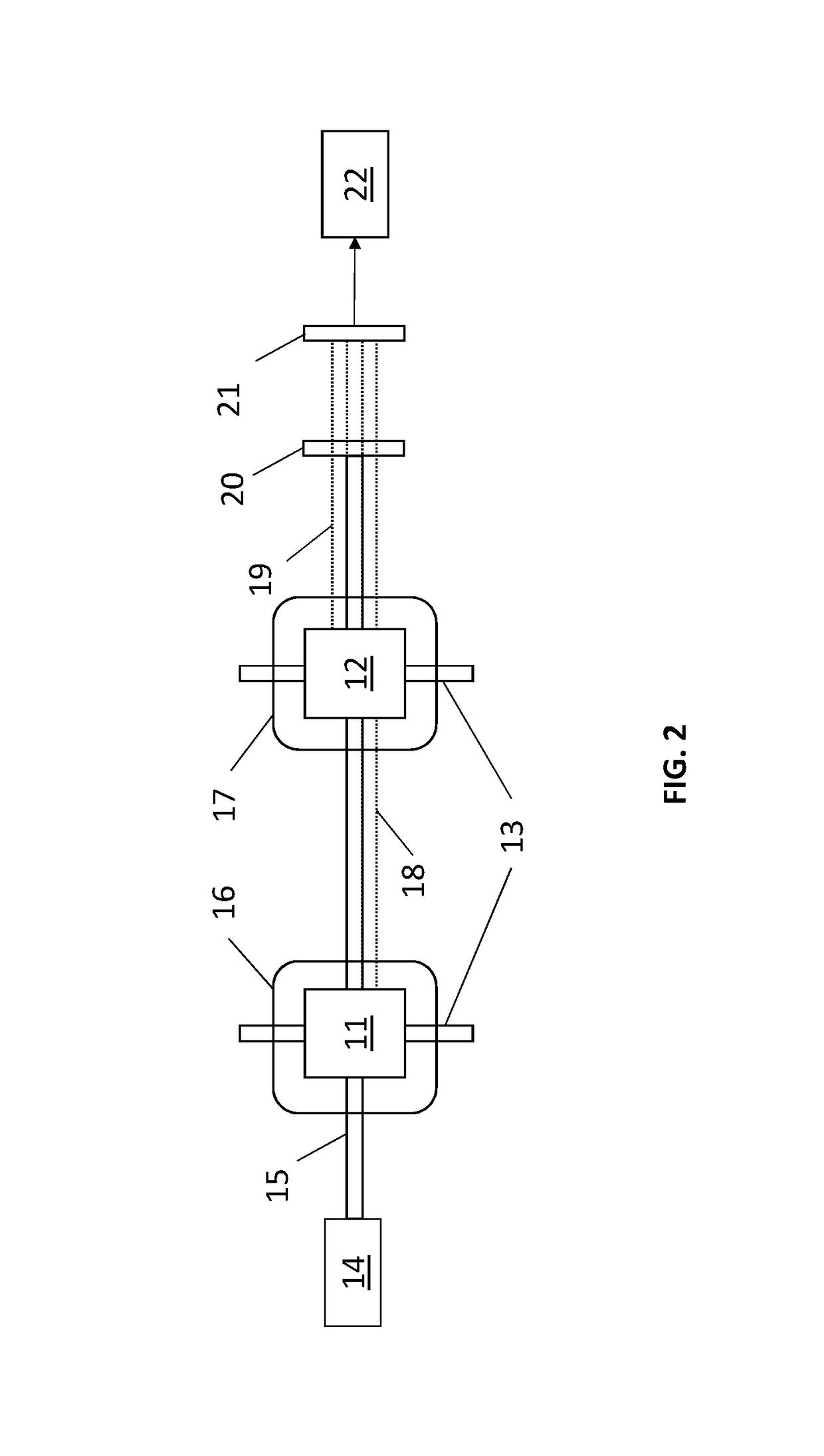System and method for measuring a magnetic gradient field
a gradient field and magnetic field technology, applied in the field of magnetic field imaging, can solve the problems of not carrying useful gradient signal information, noise cancellation of near perfect common mode magnetic field, and low signal-to-noise ratio, so as to improve the signal-to-noise ratio, improve the efficiency of detecting microwave signals, and improve the effect of signal-to-noise ratio
- Summary
- Abstract
- Description
- Claims
- Application Information
AI Technical Summary
Benefits of technology
Problems solved by technology
Method used
Image
Examples
example
[0023]As an example, a magnetic gradiometer based on microwave sideband generation has been constructed out of two vapor cells 30 and 31 as shown in FIG. 5. A laser with 32 is used to generate the light beam 33 used for pumping and probing. The light beam was circularly polarized with a quarter-wave plate 34 and the wavelength of the light beam 33 is tuned near the |5S1 / 2, F=2↔|5P1 / 2transition of 87Rb atoms 35 confined inside the vapor cells 30 and 31. The light 33 was used to populate the |5S1 / 2, F=2, mF=2state with high probability. A microwave □ / 2 pulse at t=tm is applied to the atoms 35 inside the two vapor cells 30 and 31 with antennas 36 and 37 placed in the vicinity of the cells 30 and 31. The microwave □ / 2 pulse was resonant with the |5S21 / 2, F=2, mF=2|5S1 / 2, F=1, mF=1transition at the respective atom locations. After the microwave pulse is applied, the atoms 35 in the two vapor cells 30 and 31 start to precess in a coherent superposition of the |5S1 / 2, F=2, mF=2↔|5S1 / 2, F=1...
PUM
 Login to View More
Login to View More Abstract
Description
Claims
Application Information
 Login to View More
Login to View More - R&D
- Intellectual Property
- Life Sciences
- Materials
- Tech Scout
- Unparalleled Data Quality
- Higher Quality Content
- 60% Fewer Hallucinations
Browse by: Latest US Patents, China's latest patents, Technical Efficacy Thesaurus, Application Domain, Technology Topic, Popular Technical Reports.
© 2025 PatSnap. All rights reserved.Legal|Privacy policy|Modern Slavery Act Transparency Statement|Sitemap|About US| Contact US: help@patsnap.com



